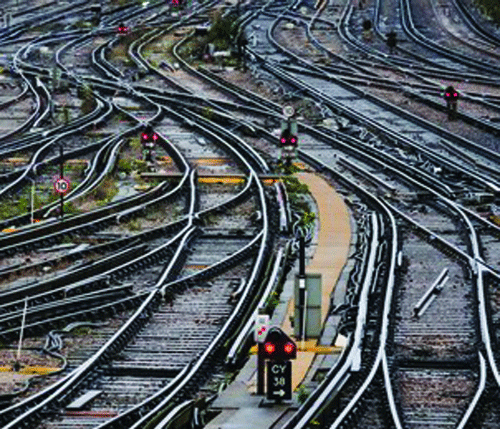The new corridor could provide transport connections to ensure the development of landlocked countries such as Afghanistan, Bhutan and Nepal
To develop connectivity and boost commercial activity,ITI-DKD-Y(Istanbul-Tehran-Islamabad-Delhi-Kolkata-Dhaka-Yangon) route has been long proposed as the major rail freight transport corridor. It has great potential and can have a positive impact on the economy of the sub-region and of the countries involved.
The proposed ITI-DKD-Y corridor will be part of the Southern Corridor of the Trans Asia route (TAR), which is the least integrated, but crosses the most populoussub-regions in the world with a maximum potential of consolidating Asia's industrial activity.
The new corridor could provide transport connections to ensure the accessibility and development of landlocked countries such as Afghanistan, Bhutan and Nepalbecoming an artery for intra-regional trade.
Currently, the Turkey-Iran part of the corridor is operational. For the ITI train to get on tracks, the weaker part of the equation -Pakistan -- has to upgrade its infrastructure in Baluchistan province. Here lies a catch as it is linked to the Belt Road initiative (BRI) of China which is trying to set up access to Gwadar port through Pakistan railways. Opening of the ITI route depends on internal dynamics and relations between Baluchisand the Pakistan Government.With the US exit from Afganistan, the scenario is further changed in the region.
Indian Railways has prioritised the railway corridor that connects Istanbul to Dhaka (Bangladesh) through Delhi and Kolkata.
India's emphasis is on regional connectivity projects with Nepal-Bangladesh-Bhutan. Connectivity with Nepal will be boosted with the completion of Jogbani(IR)-Biratnagar(Nepal) line of which 5.4km is in India and 13.3 Km is Nepal and Jaynagar(IR)-Bijalpura(Nepal) of which around 3 km is in India and around 17 km in Nepal besides theRaxual-Birganj link. These networks will boost trade within SAARC countries and will be cost effective. These will also be subroutes to TAR.
India has also an ambitious project to connect all state capitals of eastern states with the IR network. Such links are expected to be completed in another year or two. One of these -- Imphal in Manipur -- is on the TAR.
The India- Mayanmar rail connectivity is planned through Jiribam-Imphal in Manipur. The missing link between the two countries is the Jiribam-Moreh (India)-Tamu-Kaley (Kalemyo-Myanmar) section, and this alignment is part of the southern corridor of the Trans-Asian Railway (TAR) network. The link between Jiribam and Imphal (110 km) is under construction by Indian Railways over inhospitable terrain.There is no sanction plan for construction of a rail link to Moreh from Imphal and is not likely to happen in the near future.
The other route to Mayanmar is through Bangladesh Railway network. Chittagong-Dohazari-Gundum(Cox bazaar route) and further on to Maynmar. This needs Chittagong-Cox Bazar rail network to be completed and corresponding link to Yangon on Myanmar side also implemented. The gaps in both sides are too long to be bridged soon.
Bangladesh Railways has several projects to improve rail connectivity internally which will in the long run be part of TAR. The rail-cum-road bridge over the Padma riverbeing built at Mawa-Bhanga will be part of the rail route between Dhaka-Jessore and through Jessore to Kolkata.This link has the potential to cut down actual running timeby two hours between Kolkata and Dhaka. If customs and immigration time is fine-tuned, one can reach Dhaka in 7-8 hours and Agartala in 12hours or so from Kolkata. Presently these journeys take 12 hrs and 40-oddhours,respectively from Kolkata. This route is expected to be completed in 2024.
The Dhaka-Comilla chord rail route planned by BR will provide an even shortened route between Bangladesh and Tripura, Mizoram andManipur. The port towns of Chittagong, Magla and Payara in Bangladesh and the India-Nepal-Bhutan corridor will be easily linked, boosting trade in land-locked countries of SAARC.
For the ambitious ITI-DKD-Y route to be fully operational, infrastructural inputs in Pakistan, India,Bangladesh and Myanmarare very important. This will be achieved with good relationships between neighbouring countries. Much will depend on the security scenario and socio-political situation of the countries involved.Political stability in the countries of the region and government patronage to rail projects are important for such routes to be fully operational.
(The writer is a retired Indian Railways professional and consultant. The views expressed are personal.)


























